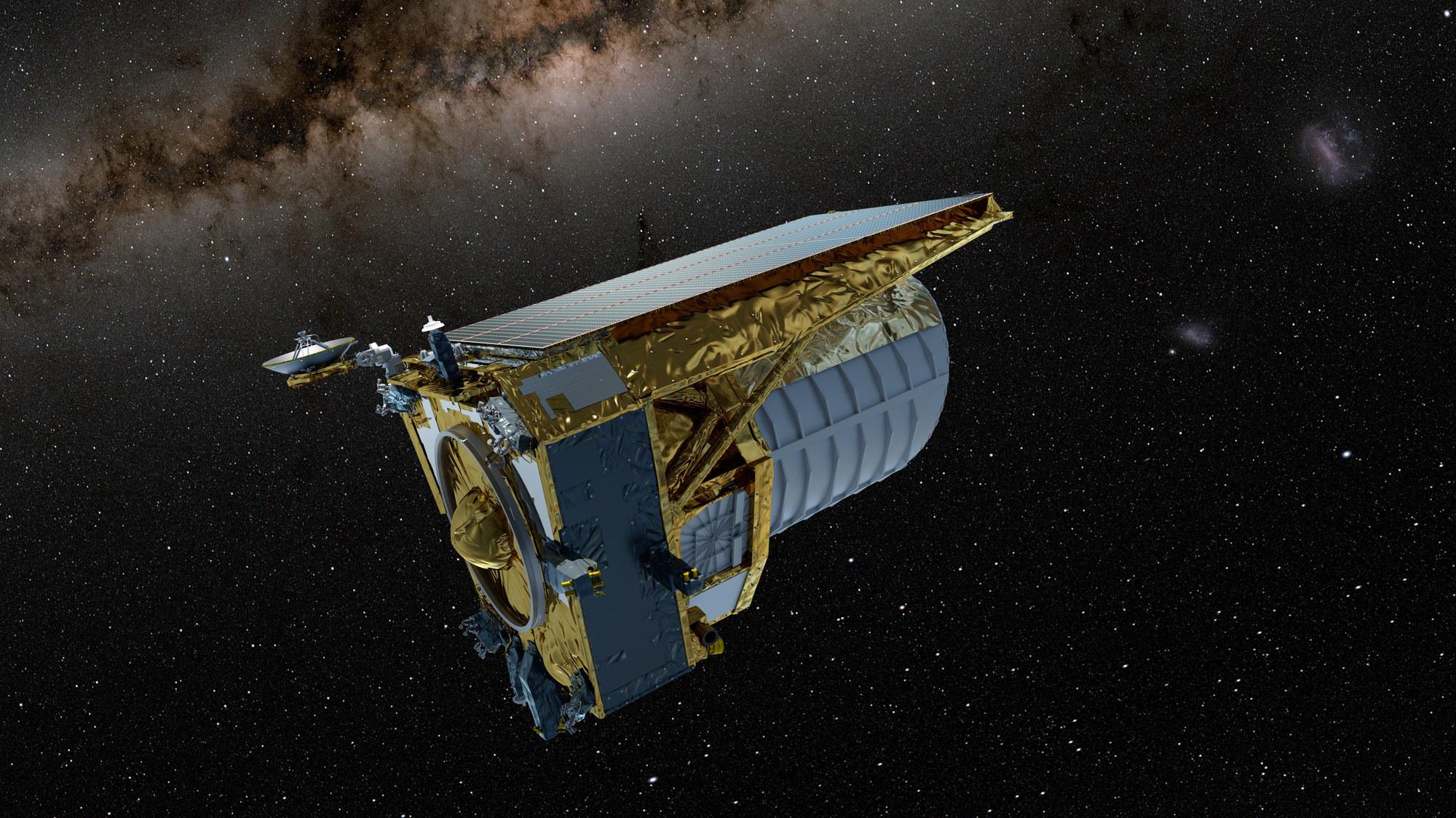
2 minute read
Exploring the Dark Universe
(ESA release, July 2023)
"The successful launch of Euclid marks the beginning of a new scientific endeavour to help us answer one of the most compelling questions of modern science," says ESA Director General Josef Aschbacher. "The quest to answer fundamental questions about our cosmos is what makes us human. And, often, it is what drives the progress of science and the development of powerful, far-reaching, new technologies."
"The third dimension representing time itself"
Euclid will observe billions of galaxies out to 10 billion light-years to create the largest, most accurate 3D map of the Universe, with the third dimension representing time itself. This detailed chart of the shape, position and movement of galaxies will reveal how matter is distributed across immense distances and how the expansion of the Universe has evolved over cosmic history, enabling astronomers to infer the properties of dark energy and dark matter. This will help theorists to improve our understanding of the role of gravity and pin down the nature of these enigmatic entities.
To achieve its ambitious scientific goal, Euclid is equipped with a 1.2 m reflecting telescope that feeds the two innovative scientific instruments: VIS, which takes very sharp images of galaxies over a large fraction of the sky, and NISP, which can analyse galaxies’ infrared light by wavelength to accurately establish their distance.
"ESA’s Estrack network of deep space antennas has been upgraded"
The spacecraft and communications will be controlled from ESOC. To cope with the vast amounts of data Euclid will acquire, ESA’s Estrack network of deep space antennas has been upgraded. These data will be analysed by the Euclid Consortium – a group of more than 2,000 scientists from more than 300 institutes across Europe, the USA, Canada and Japan.
The commissioning of Euclid progressed mid-July. Mission controllers turned on the VIS and NISP detectors to start recording the light collected by the telescope. The analysis of the detector data confirmed that the sensors of both NISP and VIS are performing well. At this stage, the telescope was still unfocused. In the coming days the operations team will focus the telescope by carefully adjusting the position of the secondary mirror. The operations team, however, discovered that the VIS sensors picked up more light than expected. This light caused an unnatural pattern in the VIS image in addition to the true astronomical sources. The operations team, along with partners in science and industry, are busy investigating further. The tests show that the unexpected light is only detected at specific orientations. This gives us clues about the origin of the extra light and how it could be reduced, and is a promising path forward towards a solution.

Euclid is a European mission, built and operated by ESA, with contributions from NASA. The Euclid Consortium is responsible for providing the scientific instruments and scientific data analysis. ESA selected Thales Alenia Space as prime contractor for the construction of the satellite and its service module, with Airbus Defence and Space chosen to develop the payload module, including the telescope. NASA provided the detectors of the NearInfrared Spectrometer and Photometer, NISP. Euclid is a medium-class mission in ESA’s Cosmic Vision Programme. More details can be found at this link
"The VIS sensors picked up more light than expected"







